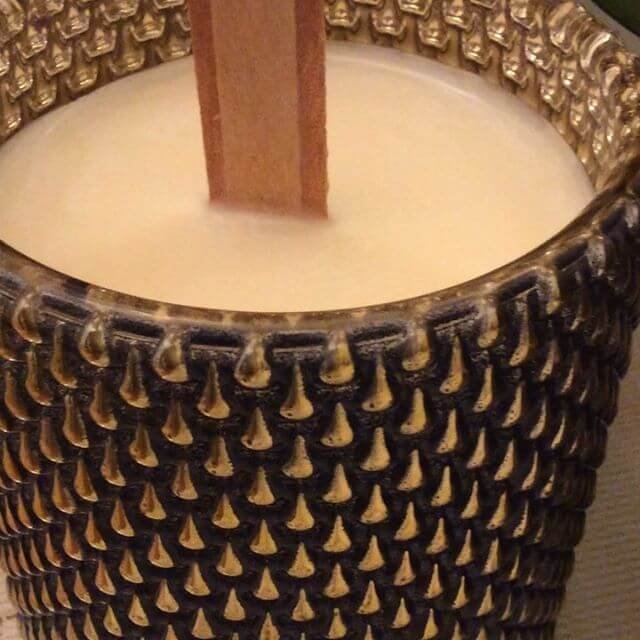Natural wicks for candles making are an essential component that can greatly influence the quality and performance of your homemade candles. Choosing the right type of wick is crucial in ensuring a clean and efficient burn for your candles, while also contributing to a more environmentally-friendly approach to candle making.
When it comes to natural wicks, there are various options available in the market, each with its own unique characteristics and benefits. Understanding these different types of natural wicks is important in order to select the most suitable option for your specific candle making needs.
In this article, we will delve into the world of natural wicks for candle making, exploring the various benefits they offer and how you can make the most out of them. From understanding the science behind natural wicks to providing a step-by-step guide on how to use them in your candle making process, we will cover everything you need to know about incorporating natural wicks into your homemade candle designs.
So, whether you’re a beginner looking to improve your candle making skills or an experienced crafter seeking new inspiration, this article has something for everyone.
Understanding Different Types of Natural Wicks Available in the Market
When it comes to making candles, using natural wicks can have a variety of benefits. Natural wicks are typically made from materials such as cotton, hemp, or wood, and they offer a more sustainable and environmentally friendly option compared to synthetic wicks. Understanding the different types of natural wicks available in the market is essential for selecting the right one for your candle making project.
Cotton wicks are among the most popular natural wick options for candle making. They are known for their clean burn and minimal soot production, making them ideal for various types of candles. Hemp wicks, on the other hand, are known for their slow burn and ability to enhance the fragrance throw of scented candles. Wood wicks provide a unique crackling sound when burned, adding an extra sensory experience to your candles.
When choosing the right natural wick for your candles, consider factors such as the type of wax you are using, the size of your candle, and the desired burn time. For example, thicker wicks may be suitable for larger candles or those made with soy wax, while thinner wicks may work better for smaller candles or those made with beeswax.
Additionally, considering whether you want a low or high scent throw can help determine which type of natural wick is best suited for your needs.
| Natural Wick Type | Characteristics | Benefits |
|---|---|---|
| Cotton Wicks | Clean burn and minimal soot production | Ideal for various types of candles |
| Hemp Wicks | Slow burn and enhanced fragrance throw | Can improve the scent distribution in scented candles |
Unique crackling sound when burnedIdeal for Creating an Extra Sensory Experience |
By understanding these differences and benefits, you can make informed decisions when selecting natural wicks for your candle making endeavors. Each type offers its own unique set of properties that can contribute to the overall performance and aesthetic appeal of your handmade candles.
How to Choose the Right Natural Wick for Your Candles
Choosing the right natural wick for your candles is a crucial step in the candle making process. There are several factors to consider when selecting a natural wick, including the type of wax you are using, the diameter of your candle, and the desired burn time.
One of the most popular natural wicks for candle making is cotton wick, known for its clean and slow burn. Another option is hemp wick, which is also environmentally friendly and has a strong flame.
When choosing a natural wick for your candles, it’s important to consider the size of your candle. The larger the diameter of your candle, the thicker the wick should be to ensure an even burn. For smaller candles, a thinner wick is more suitable. Additionally, if you want a longer burn time for your candles, choosing a thicker wick can help achieve this.
The type of wax you are using also plays a role in selecting the right natural wick for your candles. Soy wax and beeswax often work well with most types of natural wicks, while paraffin wax may require a different type of wick due to its characteristics. It’s essential to do some research on which natural wicks pair best with the specific wax you are using to achieve optimal results in your candle making process.
| Factor | Consideration |
|---|---|
| Candle Size | Choose thicker wicks for larger diameters |
| Burn Time | Thicker wicks can provide longer burn times |
| Type of Wax | Research which natural wicks pair best with specific wax types |
The Science Behind Natural Wicks and Their Function
When it comes to making candles, the type of wick used is one of the most important factors to consider. Natural wicks offer many benefits for candle making, and understanding the science behind how they function can help you make informed decisions when choosing the right wick for your candles.
Capillary Action and Combustion
One of the key aspects of the science behind natural wicks is capillary action. This is the process by which a liquid, such as melted wax, is drawn up into a small space, such as the fibers of a wick. When a candle is lit, the heat from the flame vaporizes the wax near the wick.
This creates a pool of liquid wax that is then drawn up into the wick through capillary action. As this liquid reaches the top of the wick, it is heated by the flame and vaporizes, creating more fuel for the fire and keeping it burning.
Choosing the Right Size and Material
The function of a natural wick also depends on its size and material. Different types of natural fibers, such as cotton or hemp, have different rates of capillary action and burn at different speeds.
It’s important to choose a wick size and material that is appropriate for the diameter and composition of your candle. A wick that is too small may not draw up enough wax to fuel the flame, while a wick that is too large may cause excessive smoking or sooting.
Ensuring an Efficient Burn
Understanding how natural wicks function can also help you ensure that your candles burn efficiently and evenly. By selecting the right type of natural wick for your specific candle-making needs, you can achieve optimal burning conditions and reduce issues such as tunneling or uneven melting. Additionally, proper placement and trimming of natural wicks can also impact their function in ensuring a clean burn for your candles, making them not only beautiful but highly functional as well.
Exploring the Eco-Friendly Aspects of Natural Wicks for Candle Making
When it comes to making candles, using natural wicks has several eco-friendly benefits that make them a popular choice among environmentally conscious crafters. One of the main advantages of natural wicks is that they are made from sustainable materials such as cotton or hemp, which are biodegradable and renewable. This means that when you use natural wicks in your candle making, you are reducing your environmental impact and supporting the use of sustainable resources.
Another eco-friendly aspect of natural wicks for candle making is that they do not release harmful toxins when burned. Synthetic wicks can emit chemical fumes when the candle is lit, contributing to indoor air pollution. On the other hand, natural wicks produce a cleaner burn, ensuring that your homemade candles are not only better for the environment but also for your health.
Furthermore, by choosing natural wicks for candle making, you are supporting ethical and environmentally responsible practices. Many companies that produce natural wicks prioritize fair labor conditions and sustainable harvesting methods, ensuring that the entire production process is aligned with eco-friendly principles. This means that by using natural wicks in your candle making endeavors, you are contributing to a more sustainable and ethical industry overall.
Step-by-Step Guide on How to Use Natural Wicks in Your Candle Making Process
When it comes to creating candles, using natural wicks is a sustainable and eco-friendly choice that also offers several benefits. Natural wicks are made from materials such as cotton, hemp, or wood, and they are free from the harmful chemicals often found in synthetic wicks. In this step-by-step guide, we will walk you through the process of using natural wicks in your candle making endeavors.
Choosing the Right Natural Wick
The first step in using natural wicks for your candle making process is to choose the right type of wick for your specific needs. Consider factors such as the size and type of candle you are creating, as well as the type of wax you will be using. Different natural wicks have different burn rates and performance characteristics, so it’s essential to select a wick that matches your specific requirements.
Preparing the Wick for Use
Before incorporating a natural wick into your candle making process, it’s important to prepare the wick for use. This may involve trimming the wick to the appropriate length and treating it with a suitable primer or coating to enhance its performance during burning. By taking these preparatory steps, you can ensure that your natural wick functions effectively within your candle design.
Inserting the Wick Into Your Candle
Once you have selected and prepared your natural wick, it’s time to insert it into your candle. This step involves carefully placing the prepared wick into the center of your mold or container and securing it in place to prevent any movement during the pouring of wax. Properly positioning and securing the natural wick is crucial for achieving an even burn and optimal performance in your finished candle.
By following this step-by-step guide on using natural wicks in your candle making process, you can harness their eco-friendly benefits while achieving beautiful and functional candles. Throughout each stage – from selecting the right natural wick to preparing and inserting it into your candle – attention to detail will ensure successful results with this sustainable choice for candle making.
Tips and Tricks for Achieving the Best Results With Natural Wicks
When it comes to achieving the best results with natural wicks for candle making, there are a few tips and tricks that can help you create high-quality, long-lasting candles. Here are some essential tips to keep in mind:
- Choose the Right Size: It is important to select the appropriate size of natural wick for your candles. A wick that is too small may not burn hot enough to melt all of the wax, while a wick that is too large could cause your candle to burn too quickly.
- Trim Your Wicks: Trimming your natural wicks before each use can help promote an even burn and prevent excessive smoking. This simple step can make a big difference in the overall performance of your candles.
- Use High-Quality Materials: Opt for high-quality natural wicks and wax to ensure the best results. Investing in good materials can make a significant impact on the final outcome of your handmade candles.
In addition to these tips, there are some tricks that experienced candle makers swear by when using natural wicks:
- Testing Different Wicks: Experimenting with various types of natural wicks can help you understand their burning characteristics and find the perfect match for your specific candle-making needs.
- Adding Fragrance Oils Carefully: If you are incorporating fragrance oils into your candles, be mindful of how they may interact with the natural wick. Some oils may affect the burning process, so it’s crucial to follow recommended guidelines for scenting your candles.
- Pouring Temperature: The temperature at which you pour your wax can impact how well the natural wick adheres and performs in the finished candle. Be sure to follow recommendations for pouring temperature based on the type of wax and natural wick you are using.
By keeping these tips and tricks in mind, you can enhance your candle-making process and achieve exceptional results when using natural wicks.
Overall, utilizing these techniques can help elevate your candle-making endeavors, producing beautiful and effective creations incorporating quality materials like natural wicks.
Troubleshooting Common Issues When Using Natural Wicks in Candle Making
When using natural wicks for candle making, it is important to be aware of the common issues that may arise during the process. By being prepared and understanding how to troubleshoot these issues, you can ensure that your candles are of the highest quality. Here are some common problems you may encounter when using natural wicks, along with tips on how to address them:
1. Uneven Burning: One common issue that can occur when using natural wicks is uneven burning, where one part of the candle burns faster than the rest.
This can result from a variety of factors, such as the type of wax used or the size of the wick. To address this issue, consider using a larger wick size for a more even burn, or choosing a different type of natural wick that is better suited for the specific type of wax you are using.
2. Mushrooming: Mushrooming refers to when excess carbon builds up at the tip of the wick and creates a mushroom-like shape. This not only affects the aesthetic appeal of the candle but can also lead to soot and smoke. To prevent mushrooming, trim the wick to a shorter length before each use and ensure that it remains centered in the candle while burning.
3. Poor Scent Throw: If you find that your scented candles made with natural wicks are not emitting enough fragrance, it could be due to an issue with the wick size or type. Consider experimenting with different wick options and sizes to find one that provides optimal scent throw without affecting burn quality.
By understanding these common issues and how to troubleshoot them effectively, you can make sure that your candles made with natural wicks meet both aesthetic and functional expectations, providing a delightful experience for anyone who uses them.
Creative Ways to Incorporate Natural Wicks Into Different Candle Designs
When it comes to making candles, the type of wick used can greatly impact the overall design and functionality of the final product. Natural wicks for candle making offer a unique opportunity to incorporate creativity and innovation into your designs. Whether you are a seasoned candle maker or just starting out, there are a multitude of ways to integrate natural wicks into your candle designs.
One creative way to incorporate natural wicks into different candle designs is by experimenting with various lengths and thicknesses. By using different lengths of natural wicks, you can create candles of varying heights, adding visual interest to your designs. Similarly, playing around with different thicknesses of natural wicks can alter the burn rate and intensity of the flame, allowing for more customized candle options.
Another innovative approach is to intertwine multiple natural wicks together to create intricate patterns in your candles. This technique not only adds a decorative element to the design but also provides functional benefits such as a more even burn and increased fragrance diffusion. Additionally, incorporating natural wicks in an asymmetrical or non-traditional manner can result in visually striking and asymmetrical candle designs that stand out from the ordinary.
Furthermore, utilizing unique materials alongside natural wicks can open up endless possibilities for creative candle making. For example, embedding dried flowers or herbs into the wax around the natural wick can add a charming and rustic touch to your candles. Alternatively, combining different types of natural materials such as cotton, hemp, or wood in a single candle can result in visually captivating and multi-sensory experiences for end users.
Exploring the Aesthetic and Functional Benefits of Using Natural Wicks in Candles
In conclusion, the use of natural wicks for candle making provides a range of benefits that are both aesthetic and functional. From their environmentally-friendly aspects to the scientific principles behind their function, natural wicks offer a sustainable and effective option for those looking to create beautiful and functional candles.
By understanding the different types of natural wicks available in the market and learning how to choose the right one for your specific needs, candle makers can ensure that they achieve the best results in their craft.
One of the key advantages of using natural wicks is their eco-friendly nature. With an increasing focus on sustainability and environmental impact, many consumers are seeking out products that align with these values.
By using natural wicks in candle making, artisans can tap into this demand for more sustainable options while also enjoying the benefits of a cleaner burn and longer-lasting candles. Additionally, incorporating natural wicks into different candle designs allows for creative expression and unique aesthetic outcomes, further enhancing the appeal of these products to a wide range of consumers.
In addition to their environmental benefits and aesthetic appeal, natural wicks offer functional advantages as well. By following a step-by-step guide on how to use natural wicks in the candle making process and employing tips and tricks for achieving optimal results, artisans can ensure that their candles burn evenly and efficiently.
Furthermore, understanding the science behind natural wicks and troubleshooting common issues when using them can help to overcome any challenges that may arise during the production process. Overall, by exploring both the aesthetic and functional benefits of using natural wicks in candles, artisans can elevate their craft while appealing to environmentally-conscious consumers.
Frequently Asked Questions
What Is Safe to Use as a Candle Wick?
There are several safe options for candle wicks, including cotton wicks, wooden wicks, and paper wicks. It’s important to ensure that the wick is designed specifically for candle making to prevent any safety hazards.
What Material Works as a Candle Wick?
The most common material used for candle wicks is cotton, as it has good absorption properties and burns steadily when properly sized. However, some candle makers also use wooden or paper wicks depending on the type of candle they are making.
How Do You Improvise a Candle Wick?
If you need to improvise a candle wick in a pinch, you can use a piece of twine or cotton string as a makeshift wick. It’s important to ensure that whatever material you use is clean and untreated to prevent any harmful fumes while burning.

Welcome to my candle making blog! In this blog, I will be sharing my tips and tricks for making candles. I will also be sharing some of my favorite recipes.




